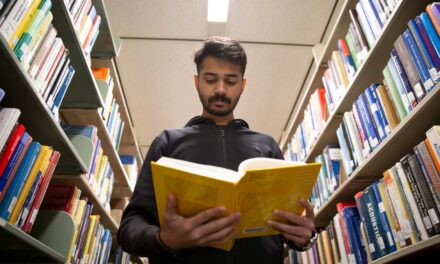
Engineering’s Zhang wins grant worth $1.23 million
October 22, 2004
A team led by Yong-Hang Zhang, professor of electrical engineering at the Ira A. Fulton School of Engineering, has been awarded a five-year, $1.23 million grant from the Department of Defense’s (DoD) Multidisciplinary University Research Initiative (MURI) program.
The MURI program is designed to address large multidisciplinary topic areas representing exceptional opportunities for defense and commercial applications.
“From the sheer size of this award, it is clear Dr. Zhang’s work stands to substantially expand our understanding of semiconductor physics, potentially revolutionizing some standard semiconductor processes,” says Dr. Bruce Fette, chief research scientist at General Dynamics and one of the industrial advisers to the MURI program.
Zhang, along with collaborator Jose Menendez, professor of physics from ASU’s College of Liberal Arts and Sciences, will delve into the physics and engineering issues of solid-state refrigeration.
Cryogenic refrigeration is needed for many defense and communications satellites.
Current satellites use a Stirling cooler technology, which contains a compressor that cools much like our home air-conditioner units. But when the Stirling cooler operates, it can create vibrations that can hamper many of the imaging, sensing and navigation components of the satellite.
“This is just like if you want to take a picture and your hand shakes, then the picture won’t be very clear,” Zhang says. “There is a tremendous need to have a solid-state cooler, and solid-state means that you don’t have any moving parts.”
The cooling equipment is thus expected to last longer, extending satellite longevity and reducing maintenance while in orbit.
The heart of Zhang’s alternative approach, called electroluminescence upconversion cooling (ELUC), uses semiconductor technology to create the cooling effect. In ELUC, a simple light emitting diode is used to inject electrons into an active region in the device.
“The electrons carry the heat from the semiconductor and turn the heat into photons, or photo energy, that leaves the crystal,” Zhang says.
By inputting an electron with a lower energy and having a photon, or particle of light, with higher energy coming out, the cooling effect takes place.
While honing the theoretical details, Zhang’s group also will be working to find the right semiconductors, like gallium arsenide and indium antimonide, to optimize the design and deliver a new type of cooling device.
Because the technology is integrated into semiconductors, Zhang envisions being able to adapt this technology to cool computer CPUs and other electronic devices.
“Our approach is even practical for computers,” Zhang says. “I have talked with Intel and IBM, and they are very interested in cooling technology because as CPUs are getting faster, there is more heat coming out of them.”
The technology could replace the fans and heat sinks that struggle to cool laptop and desktop computers.
“If successful, advancements spinning out from Dr. Zhang’s work will have a direct impact on thermal management technology for computers and cryocooling technologies for satellite communications and sensor technology,” Fette says.
The official kickoff meeting of the new ASU MURI Center for Semiconductor Optical Refrigeration and the Consortium for Laser Cooling in Solids at University of New Mexico was held recently in Albuquerque . Many experts from the funding agency, Air Force Office of Scientific Research, Air Force Research Laboratories, various universities, industries, Los Alamos and Sandia National Laboratories, attended the event and discussed the goals and focus of the centers.



































